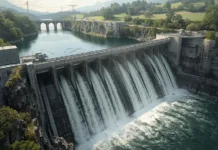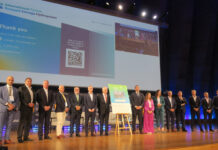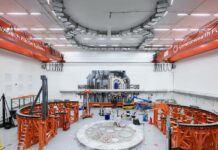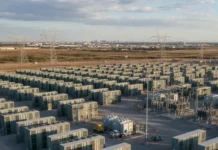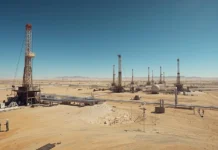The UK Atomic Energy Authority (UKAEA) is building on its strong record in digital innovation with a new focus on tritium fuel cycle technologies, a key part of the push toward sustainable fusion energy. Working with Bilfinger UK, the Authority has created a virtual simulator to train operators at the UKAEA-Eni H3AT Tritium Loop Facility. The system lets engineers rehearse complex operating tasks in a realistic, risk-free setting, improving both safety and training efficiency. It can also mirror H3AT’s real conditions, giving UKAEA a way to test potential adjustments and understand their impact before making changes on site.
The simulator isn’t just for training. It also gives UKAEA a powerful way to demonstrate H3AT’s capabilities to visitors and industry partners, offering them a closer look at how fusion operations and technologies come together in practice. Looking ahead, the virtual control room could be offered to third parties as a testbed for their own fuel cycle management systems, helping expand the reach of UK fusion expertise across the wider industrial ecosystem.
Stephen Wheeler, Executive Director for Fusion Technology and Tritium Fuel Cycle at UKAEA, said: “The UKAEA-Eni H3AT Tritium Loop Facility will be the largest and most advanced tritium fuel cycle in the world. It also represents a significant advance in the enhancement of industry capability within the fusion sector. By creating this digital control room with the support of Bilfinger, we’re increasing technical capability and supporting industry to deliver the mechanisms that will serve fusion in the future. The development will provide an unprecedented opportunity to train the next generation of fusion engineers through cutting-edge virtual simulation technology. Using digital technology to train operators is business-as-usual across several divisions at UKAEA, so it is really pleasing that we are able to employ the same principles within the UKAEA-Eni H3AT Tritium Loop Facility. We are also delighted to have been able to support a broad supply chain through this investment.”
Bilfinger UK, acting as a Tier One contractor, coordinated and delivered the control system and managed subcontracting with Schneider Electric, AVEVA, and Siemens.
The initiative underscores the strength of the UK’s industrial and technological ecosystem in driving fusion development. UKAEA’s Remote Operations team at the Joint European Torus (JET) has used digital platforms for over 25 years, and this expertise is now being extended to support JET’s decommissioning. The same approach has been applied internationally, including a full digital rehearsal of fuel debris retrieval at Fukushima Daiichi using the Next Generation Digital Mock-Up (NG-DMU), developed under the LongOps project in collaboration with the Nuclear Decommissioning Authority, UK Research and Innovation, and the Tokyo Electric Power Company.
















